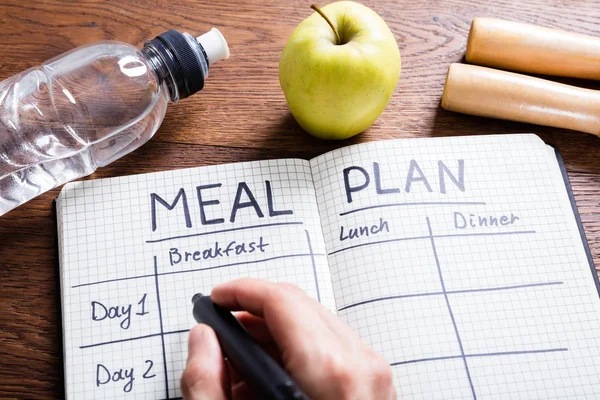Meal planning is a game changer when it comes to saving time, reducing stress, and ensuring your family eats well-balanced meals throughout the week. But if you’re new to the concept, it can seem overwhelming. Don’t worry—by breaking it down into manageable steps, you’ll be able to tackle meal planning like a pro. In this guide, we’ll walk you through the basics of organizing a week’s worth of meals, from creating a shopping list to prepping ingredients and balancing your nutrition.
Step 1: Understand the Basics of Meal Planning
Meal planning involves choosing meals ahead of time so you know exactly what to make each day, which ingredients to buy, and how to prep. The benefits are numerous: you can avoid the last-minute scramble for dinner, reduce food waste, and even stick to a budget.
Before you dive in, it’s important to think about your goals:
- Time-saving: Meal planning reduces the stress of wondering what to make each day.
- Budget-friendly: With a plan, you can buy ingredients in bulk and minimize food waste.
- Healthy eating: It helps you balance meals by planning in advance, ensuring you’re getting the right amount of nutrition.
Step 2: Make a Simple Meal Plan
Let’s keep it easy to start with. Pick three meals a day—breakfast, lunch, and dinner—for seven days. That’s 21 meals in total. You can mix and match different recipes depending on your preferences and what you already have in your pantry.
Simple Meal Plan Example:
Here’s a basic plan to help you get started:
Monday:
- Breakfast: Scrambled eggs with spinach and whole-grain toast
- Lunch: Turkey and avocado wrap with a side of carrots and hummus
- Dinner: Grilled chicken with quinoa and roasted vegetables
Tuesday:
- Breakfast: Greek yogurt with honey, almonds, and mixed berries
- Lunch: Chicken Caesar salad
- Dinner: Spaghetti with marinara sauce and a side of steamed broccoli
Wednesday:
- Breakfast: Oatmeal topped with bananas and chia seeds
- Lunch: Leftover grilled chicken and quinoa salad
- Dinner: Stir-fry with tofu, bell peppers, and brown rice
Thursday:
- Breakfast: Smoothie with spinach, banana, protein powder, and almond milk
- Lunch: Quinoa salad with chickpeas, cucumbers, and feta cheese
- Dinner: Baked salmon with roasted sweet potatoes and steamed asparagus
Friday:
- Breakfast: Whole-grain toast with avocado and poached egg
- Lunch: Veggie and hummus wrap
- Dinner: Turkey chili with a side of cornbread
Saturday:
- Breakfast: Pancakes with maple syrup and a side of fresh fruit
- Lunch: Grilled chicken sandwich with a side of mixed greens
- Dinner: Baked ziti with side salad
Sunday:
- Breakfast: Omelette with mushrooms, onions, and cheese
- Lunch: Tuna salad with mixed greens
- Dinner: Beef stir-fry with snow peas and brown rice
Step 3: Create a Shopping List
Once you have your meals planned, it’s time to create a shopping list. Here’s a step-by-step method to stay organized:
- Write down the meals for the week: List out all of your planned breakfasts, lunches, and dinners.
- Make a grocery list: Break it down into categories such as produce, dairy, meats, grains, canned goods, etc. This way, you’ll shop more efficiently and be less likely to forget something.
- Check your pantry and fridge: Before heading to the store, check what you already have at home to avoid buying unnecessary items.
For example:
- Produce: spinach, bananas, bell peppers, carrots, cucumbers, broccoli, etc.
- Proteins: chicken breast, turkey, tofu, eggs, salmon
- Grains: quinoa, brown rice, whole-grain bread, oats
- Canned: chickpeas, marinara sauce, tuna
- Dairy: Greek yogurt, cheese, almond milk
Step 4: Prep Ingredients Ahead of Time
To save even more time during the week, do some meal prep. You don’t need to cook everything in advance, but chopping veggies, cooking grains, or marinating proteins ahead of time can cut down on daily cooking time.
Here’s how to prep:
- Wash and chop vegetables: Wash, peel, and chop any vegetables that need it. Store them in containers for easy use.
- Cook grains in bulk: Cook a large batch of quinoa, rice, or pasta to use in multiple meals.
- Marinate meats: Marinate chicken or tofu the night before so it’s ready to cook the next day.
- Make snacks: Portion out snacks like nuts, fruits, or cut-up veggies to grab and go.
Step 5: Balance Nutrition
One of the most important parts of meal planning is ensuring that your meals are nutritionally balanced. A well-rounded meal includes a mix of proteins, healthy fats, complex carbs, and plenty of fruits and vegetables.
To achieve this:
- Protein: Include lean meats like chicken, turkey, or fish, or plant-based options like tofu, beans, and lentils.
- Healthy fats: Use avocado, olive oil, nuts, and seeds.
- Carbs: Focus on whole grains like quinoa, oats, and brown rice instead of refined carbs.
- Veggies: Aim for a variety of colorful vegetables to ensure you’re getting plenty of vitamins and minerals.
Step 6: Stay Flexible and Adjust
Life happens, and sometimes plans change. That’s okay! Be flexible. If you don’t feel like making the meal you planned for tonight, switch it up with something from another day. Just keep a few backup meals or ingredients on hand for emergencies, such as frozen vegetables, canned beans, and easy-to-cook proteins like eggs.
Final Thoughts
Meal planning doesn’t have to be intimidating. By following these steps—planning, making a shopping list, prepping ingredients, and balancing your meals—you can stay organized and enjoy stress-free, nutritious meals throughout the week. Start small, keep it simple, and adjust as needed until you find a routine that works for you. Happy planning!

